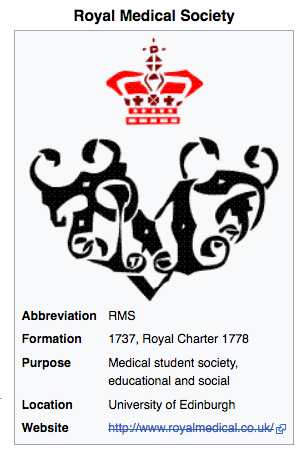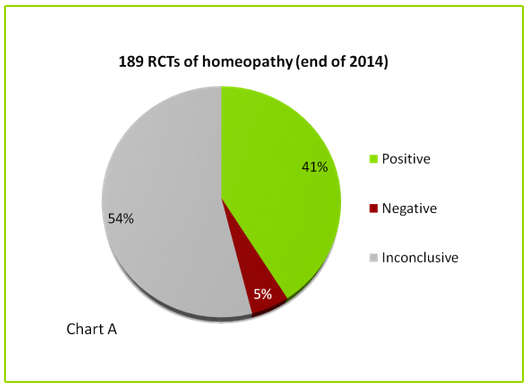Homeopathy
Volume 98, Issue 4, October 2009, Pages 186-197
Special Issue: Biological models of homeopathy Part 1
doi:10.1016/j.homp.2009.09.009 | How to Cite or Link Using DOI
Copyright © 2009 The Faculty of Homeopathy Published by Elsevier Ltd. Cited By in Scopus (5)
Permissions & Reprints
Inhibition of basophil activation by histamine: a sensitive and reproducible model for the study of the biological activity of high dilutions
J. Sainte-Laudy1, Corresponding Author Contact Information, E-mail The Corresponding Author and Ph Belon2
1CHU, Limoges 87042, France
2CRDT, 45 cours A Briand, 69300 Caluire, France
Received 8 July 2009;
revised 21 September 2009;
accepted 23 September 2009.
Available online 27 November 2009.
Background
At the beginning of this series of experiments we were looking for a model based on the use of purified commercially available compounds based on a fully described and accepted pharmacological model to study of the biological effect of high dilutions. Negative feedback induced by histamine, a major pro-inflammatory mediator, on basophils and mast cells activation via an H2 receptor me these criteria. The simplest way of measuring basophil activation in the early 1980's was the human basophil activation test (HBDT).
Objectives
Our major goal was first to study the biological effect of centesimal histamine dilutions beyond the Avogadro limit, on the staining properties of human basophils activated by an allergen extract initially house dust mite, then an anti-IgE and N-formyl-Met-Leu-Phe (fMLP). Technical development over the 25 years of our work led us to replace the manual basophil counting by flow cytometry. The main advantages were automation and observer independence. Using this latter protocol our aim was to confirm the existence of this phenomenon and to check its specificity by testing, under the same conditions, inactive analogues of histamine and histamine antagonists. More recently, we developed an animal model (mouse basophils) to study the effect of histamine on histamine release.
Methods and results
For the HBDT model basophils were obtained by sedimentation of human blood taken on EDTA and stained with Alcian blue. Results were expressed in percentage activation. Histamine dilutions tested were freshly prepared in the lab by successive centesimal dilutions and vortexing. Water controls were prepared in the same way. For the flow cytometric protocol basophils were first labeled by an anti-IgE FITC (basophil marker) and an anti-CD63 (basophil activation marker). Results were expressed in percentage of CD63 positive basophils. Another flow cytometric protocol has been developed more recently, based on basophil labeling by anti-IgE FITC (fluorescein isothiocyanate) and anti-CD203 PE (another human basophil activation marker). Results were expressed in mean fluorescence intensity of the CD203c positive population (MFI-CD203c) and an activation index calculated by an algorithm. For the mouse basophil model, histamine was measured spectrofluorimetrically.
The main results obtained over 28 years of work was the demonstration of a reproducible inhibition of human basophil activation by high dilutions of histamine, the effect peaks in the range of 15?17CH. The effect was not significant when histamine was replaced by histidine (a histamine precursor) or cimetidine (histamine H2 receptor antagonist) was added to the incubation medium. These results were confirmed by flow cytometry. Using the latter technique, we also showed that 4-Methyl histamine (H2 agonist) induced a similar effect, in contrast to 1-Methyl histamine, an inactive histamine metabolite.
Using the mouse model, we showed that histamine high dilutions, in the same range of dilutions, inhibited histamine release.
Conclusions
Successively, using different models to study of human and murine basophil activation, we demonstrated that high dilutions of histamine, in the range of 15?17CH induce a reproducible biological effect. This phenomenon has been confirmed by a multi-center study using the HBDT model and by at least three independent laboratories by flow cytometry. The specificity of the observed effect was confirmed, versus the water controls at the same dilution level by the absence of biological activity of inactive compounds such as histidine and 1-Methyl histamine and by the reversibility of this effect in the presence of a histamine receptor H2 antagonist.
Keywords: Human basophil; Mouse basophil; High dilutions; Homoeopathy; Histamine; Flow cytometry; Histamine release; IL4 release
Article Outline
Introduction
Human basophil pharmacology
Preparation of high dilutions
Analysis of human basophil activation by their metachromatic properties
Analysis of human basophil activation by flow cytometry
Relationships between results and hypotheses related to the mode of action of high dilutions
Hypothesis derived from biological experiments
Hypotheses derived from physical experiments
Conclusions
Acknowledgements
Figure 1. Human basophil stained by Alcian blue among unstained Polymorphonuclear cells.
Figure 2. Effect of histamine dilutions from 10−10 to 10−120 M, showing recurrent inhibition of activation. Basophil activation triggered by house dust mite extract. *p
Figure 3. Set up of flow cytometric protocol based on the double anti-IgE and anti-CD63 staining.
Figure 4. Effect of histamine dilutions from 10CH (10) to 20CH (20) on anti-IgE induced human basophil activation versus the water controls diluted in the same conditions. Compared to water control 16C, the effect of histamine 16C was significant (p
Figure 5. Inhibition of anti-IgE induced human basophil activation by histamine 15CH and 16CH. Results expressed in %CD63 ± SD versus the positive and negative controls prepared with water 16C.
Figure 6. Comparison of the effect of high dilutions of histamine and histidine on anti-IgE induced human basophil activation (mean of 13 experiments in triplicates). Results expressed in% CD63 ± SD versus positive and negative controls prepared in water 16C. NS = not significant.
Figure 7. Antagonist effect of lithium 10 μg/ml on inhibition of anti-IgE induced human basophil activation by histamine 15CH and 16CH. Results expressed in %CD63 ± SD, NS = not significant.
Figure 8. Set up of flow cytometric protocol for the analysis of CD203c up-regulation on activated human basophil membrane.
Figure 9. Inhibition of fMLP-induced basophil activation by histamine 16CH and histamine 2CH. Results expressed versus negative and positive controls prepared in water 16 C and expressed in MFI-CD203c ± SD. Negative controls set at 10. Statistical significance calculated on the raw data by Wilcoxon rank test.
Figure 10. Effect of 1, 3, 4-methyl histamine 16CH and histamine 16CH on fMLP-induced basophil activation. Basophil activation expressed in MFI-CD203c ± SEM, mean of 10 experiments in triplicates. Negative controls (not shown) were set at 10 to compare the different experiments performed on different blood donors. NS = not significant.
Figure 11. Effect of histamine 15CH and 16CH on histamine production by mouse total bone marrow cells stimulated by IgE versus water controls tested at the same dilution level.
View Within Article
Table 1.
Published results related to the inhibition of basophil activation by histamine dilutions
View table in article
ND = not done, NS = not significant.
1 significance calculated versus the related water control.
2 Not significant versus the whole series of water controls.
Corresponding Author Contact Information Correspondence: J Sainte-Laudy, Laboratoire d'Immunologie, Hôpital universitaire Dupuytren, 2, avenue Martin-Luther-King, 87042 Limoges, Cedex, France.














